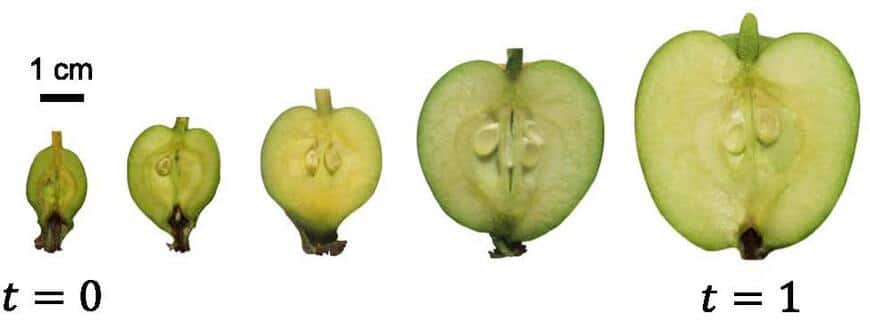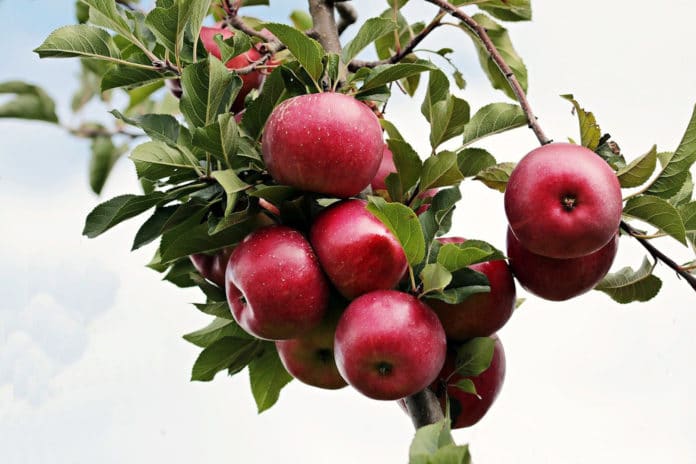Apples typically appear round, oblate, or oblong shapes. They are taper towards the bottom, which is categorized as conical. Also, there is a dimple at the top where the stem grows.
How do apples grow that distinctive shape?
Using observations, lab experiments, theory, and computational methods, a team of mathematicians and physicists have understood the growth and form of the cusp of an apple.
A simple theory was already developed to explain the form and growth of apples. This new project started when scientists connected observations of real apples at different growth stages and gel experiments to mimic the growth and theory and computations.
Scientists started collecting apples at various growth stages from an orchard at Peterhouse College at the University of Cambridge in the U.K. (the alma mater of another famous apple lover, Sir Isaac Newton).
Using those apples, the team mapped the growth of the dimple, or cusp as they called it, over time.

Using a long-standing mathematical theory known as singularity theory, scientists determined the evolution of the shape of the apple and the cusp in particular. Singularity theory describes a host of different phenomena, from black holes to more mundane examples such as the light patterns at the bottom of a swimming pool, droplet breakup, and crack propagation.
Thomas Michaels, a former postdoctoral fellow at SEAS and co-lead author of the paper, now at University College Londonvvvv said, “What is exciting about singularities is that they are universal. The apple cusp has nothing in common with light patterns in a swimming pool or a droplet breaking off from a column of water, yet it makes the same shape as they do. The concept of universality goes very deep and can be very useful because it connects singular phenomena observed in very different physical systems.”
Building from this theoretical framework, the scientists used numerical simulation to see how differential development between the fruit cortex and the core drives the formation of the cusp.
They then verified the simulations with experiments that emulated the growth of apples using a gel that swelled over time. The experiments showed that different growth rates between the bulk of the apple and the stalk region resulted in the dimple-like cusp.
Aditi Chakrabarti, a postdoctoral fellow at SEAS and co-author of the paper, said, “Being able to control and replay Morphogenesis of singular cusps in the laboratory with simple material toolkits was particularly exciting. Varying the geometry and composition of the gel mimics showed how multiple cusps form, as seen in some apples and other drupes, such as peaches, apricots, cherries, and plums.”
Besides mechanical instability, the underlying fruit anatomy is vital in giving rise to multiple cusps in fruits.
L Mahadevan, the Lola England de Valpine Professor of Applied Mathematics, of Organismic and Evolutionary Biology, and Physics at the Harvard John A. Paulson School of Engineering and Applied Sciences (SEAS), said, “Morphogenesis, literally the origin of shape, is one of the great questions in biology. The shape of the humble apple has allowed us to probe some physical aspects of a biological singularity. Of course, we now need to understand the molecular and cellular mechanisms behind the formation of the cusp as we move slowly towards a broader theory of biological shape.”
Journal Reference:
- Aditi Chakrabarti et al. The cusp of an apple, Nature Physics (2021). DOI: 10.1038/s41567-021-01335-8
